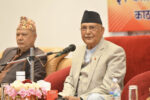Planning in Nepal possesses a reputation of becoming inconsistent and often unattainable in terms of meeting its objectives.
Throughout history, as we look upon some of the mega-infrastructure projects including Arun III, Budhi Gandaki, and the recent MCC compact, all despite years of planning and research have become victims of political mayhem during the implementation phase.
Planning refers to the forecasting of scenarios with preparations for achieving a specific goal by the sequence of actions.
Yet in Nepal, as Aaron Wildavsky wrote in his 1972 paper, planning has little to do with anything that happens in the country and argued that planning would not create the pre-conditions for its own success.
To justify his argument, Wildavsky stated how during the third plan, while the target was to increase the literacy rate from 33 to 45 percent, planners neglected to consider data such as the number of new schools, training of teachers, the standard of education, and so on, highlighting the deficiency of effective implementation of planning.
It seems that since Wildavsky’s paper in 1972, Nepal has made little progress on effectively implementing larger planned projects.
One of the prime examples is the Arun III hydropower project. According to Dr. Ram Sharan Mahat’s paper on ‘The Loss of Arun III’, the project had passed through all the feasibility tests, consultations, public hearings across the local and national level.
With Nepal’s weak governance and issues of transparency in aid flows, such widespread activities only permit a lack of effective implementation of the projects, thus, there is always delay.
Yet, eight years after the rigorous planning process, the opposition party criticized the then government for promoting the project without enough planning or consensus. In Nepal, long-term planning and its smooth implementation has always become difficult due to larger political actors, bureaucrats and foreign aid agencies all with their own priorities and pre-determined objectives providing little space for engaging in mutual cooperation and constantly breeds conflict in lieu to gain power.
Apart from all the formalities and procedures obstacles, planning has never been able to be important for higher authorities whose job is to implement the plans.
According to Lal Shankar Ghimire, former secretary of Nepal Government, Nepali plans especially those funded by foreign aid fail due to misunderstanding or unwillingness to understand the purpose of foreign aid.
The current MCC grant, despite the agreement signed in 2017 still awaits ratification from the parliament. As there was little local ownership of the planned document in the MCC compact, the agreement has polarized the nation into for and against the MCC leading it to fall prey to the failed planning process in the country.
As Wildavsky writes “The main complaint of the planners is clear: they make the plan and somebody else holds the purse.”
This is exemplified by Eugene Bramar Milay in his work “Foreign Aid and politics of Nepal” where he details an example of a planned project to construct 70 suspension bridges between 1958 – 1963 and yet 5 years later, only one bridge was constructed by the end.
Similarly, planning in Nepal also gets affected heavily by externalities like the coronavirus crisis, frequent disasters including the recent Melamchi floods that provided a halt to Kathmandu city’s quest for its water, and so on.
In Nepal, the government that makes the plan never gets to fully implement the plan due to political instability. After the 2046 People’s Movement, there has not been any government that has fully completed a 5-year term making it difficult for the planning process to even materialize.
And, before the execution of the plans, lots of them get dissolved due to change in government or dissatisfaction towards previous regime undertakings.
The planning process in this case also becomes difficult as heavy reliance on foreign aid breeds corruption – where planners benefit from getting paid for months of delay of the project.
With Nepal’s weak governance and issues of transparency in aid flows, such widespread activities only permit a lack of effective implementation of the projects, thus, there is always delay.
There needs to be a strengthening of information collection procedures for plans to be effective. The planning process is fully dependent upon the basis of collected information.
Be it in terms of foreign aid flows, or reduction of corruption, or to projects like MCC where local people’s ownership constituted prime importance, there needs to be well-informed information for proper implementation.
Similarly, planning in Nepal also gets affected heavily by externalities like the coronavirus crisis, frequent disasters including the recent Melamchi floods that provided a halt to Kathmandu city’s quest for its water, and so on.
And, unless, proper coordination and collaboration are not ensured between ministries, local governments and donor agencies, cases of unsuccessful planning will continue to pile up in Nepali development discourse.
(Sambisha Godi is a student at Thames International College)









Comment